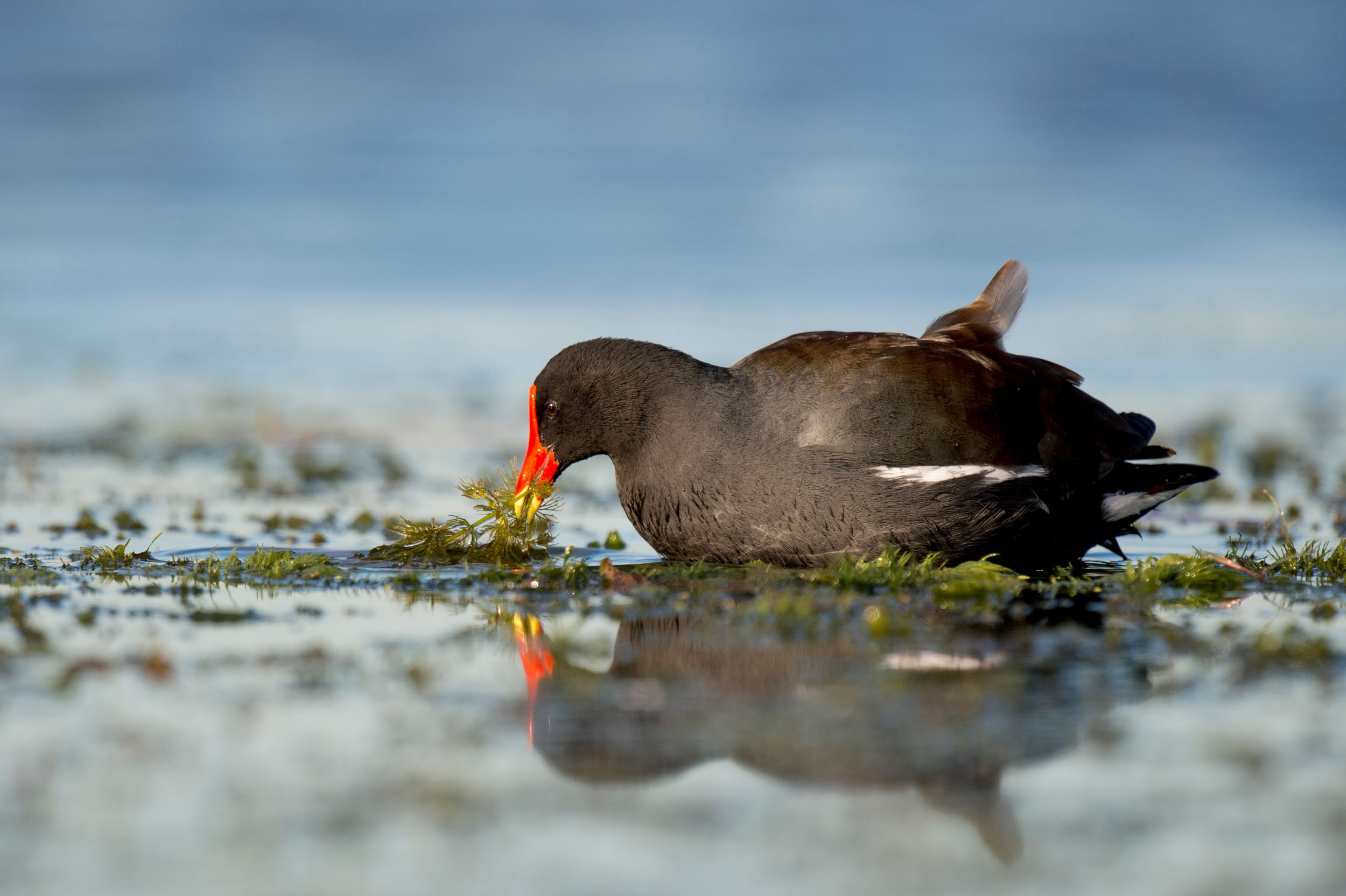
The Common Gallinule
The Common Gallinule, known scientifically as Gallinula galeata, is an intriguing bird species that occasionally graces the wetlands of Utah. While not as commonly observed in Utah as in other parts of the United States, the presence of Common Gallinules in the state’s wetlands is a treat for birdwatchers and nature enthusiasts. These birds, belonging to the rail family, are characterized by their distinctive plumage and unique vocalizations, making them an interesting subject of study and observation.
Common Gallinules are medium-sized birds with a mostly blackish or dark gray body, a distinctive red frontal shield on their forehead, and a red bill tipped with yellow. These features make them easily distinguishable from other waterfowl. Juvenile gallinules have a browner appearance and lack the vivid frontal shield and bill coloration of the adults. Their long toes enable them to walk with ease across floating vegetation and muddy marshlands, a key adaptation for their wetland habitat.
In Utah, Common Gallinules are most often seen during the warmer months, as they are primarily summer residents in the state. They are more likely to be spotted in marshes, ponds, and slow-moving water bodies with abundant vegetation. These birds prefer habitats with a mix of open water and dense vegetation, which offer protection and ample food sources. Key locations for observing Common Gallinules in Utah include the wetlands surrounding the Great Salt Lake, such as the Farmington Bay Waterfowl Management Area, and the Bear River Migratory Bird Refuge. These areas provide ideal conditions for gallinules, with their mix of aquatic vegetation and shallow waters.
The diet of Common Gallinules is quite varied, consisting of aquatic plants, seeds, and small invertebrates such as insects and snails. They are often seen foraging along the water's edge or among floating vegetation, where they use their long toes to grasp food items. Their feeding habits contribute to the control of aquatic vegetation in their habitat, playing a role in the overall health of the wetland ecosystem.
Common Gallinules are known for their loud and distinctive calls, which are often heard before the birds are seen. During the breeding season, their vocalizations become more frequent, used for communication between mates and signaling territory. Observing these birds during the breeding season can also provide insights into their nesting habits. Common Gallinules build their nests in dense marsh vegetation, often constructing them as floating platforms anchored to reeds or other plants.
For birdwatchers and nature enthusiasts interested in observing Common Gallinules in Utah, visiting the state's wetlands during the spring and summer is advisable. Early morning or late evening are often the best times for birdwatching, as these are periods of peak activity for many bird species. While spotting Common Gallinules in Utah may require patience due to their relative rarity and elusive nature, the opportunity to observe these unique and colorful birds in their natural habitat is a rewarding experience. Their presence in Utah’s wetlands adds to the state’s diverse and rich birdlife, offering a glimpse into the complex and vibrant ecosystem of these important natural areas.